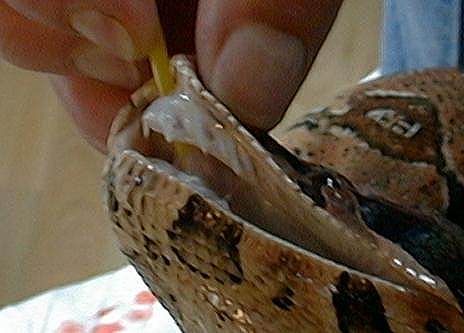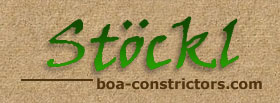Zoologists at the University of Jena study digestion process of giant snakes
At the University of Jena, zoologists examined the digestion process of giant snakes. The most modern medical equipment, like supersonics and MRIs, were used for this. That way, the digestion process could be examined (thank God) on the living object.
According to the zoologists, this research has already delivered amazing results: Giant snakes are equipped with some sort of a turbo-digestion, in which the inner organs extract in an extreme manner. The metabolism can reach higher levels than the one of a 100-meter runner.
The reptiles perform heavy-duty labor during the digestion. Amazingly, only the head of the prey is dissolved in the stomach of the animals at first. Only afterwards is the headless body dissolved. Within 2 days, the prey is turned completely into mush. As time passes, the mush then flows into the tube formed intestine. Within a few hours, the digestive tract swells up to three times of its original size.
The weight of the digestive tract also increases drastically. This is the only way that the sudden wave of nourishment can be mastered. In order to digest a whole pig, a giant snake needs little more than a week. During the process of swallowing, the snakes already begin to breathe deeper and heavier. Heart and lungs perform highly.
During the digestion of a large prey item, snakes use forty times as much oxygen as they do while resting. Only racehorses achieve this at full gallop for a few minutes, while giant snakes can keep this up for several days. This digestive maximum performance leads to only half of the calories reaching the energy storages. The rest is already used up during the digestion process.
But, the animals have no choice. They have to digest that quickly. The unchewed prey begins to decay from the inside immediately after being swallowed, producing gases that lead to painful bloatings.
Even far more dangerous are the developing ptomaine. Some giant snakes have eaten themselves to death with oversized prey items. Long breaks in the feeding cycle are necessary, because the intestinal tracts are strained to such a degree, that it sometimes takes months to regenerate them.
We thank Juergen Kromer www.boa-constrictor.de for the authorization to publish this article.
Beware of bite injuries in the area of the eyes!
Several times we pointed out in our books how important it is to wear defence glasses while handling a pet boa (or other boids)
This email we received on February, 20th:
"Hello,
I am an eye doctor and recently treated a patient who was attacked by his pet boa constrictor. The snake struck at my patient's face and its fangs became caught on his eyeball and cheek. He was only able to free himself
with difficulty. He sustained a serious eye injury, but fortunately with surgery we were able to save his sight. Clearly this is an unusual way for a person to be injured and I plan to write a report of the case for publication in one of the medical journals.
I am writing to ask some questions about the snake's behaviour - is this an unusual occurrence or do boas often strike at their prey before squeezing it to death? Are all boas non-venomous? Finally I would be very grateful if you
have a close-up picture of a boa gaping to demonstrate the fangs. Of course I would acknowledge your assistance and the source of the picture in my report.
Many thanks for your help.
Richard Sheard
Specialist Registrar, Ophthalmology
Southend General Hospital
Leigh on Sea
Essex, UK"
Of course, we were able to be helpful to Dr. Sheard. Here is the photo we sent him:
 Furthermore Dr. Sheard informed us, that the injured person handled a rat before his boa bit him. He disregarded the principle: "Don´t smell like boa food"
Furthermore Dr. Sheard informed us, that the injured person handled a rat before his boa bit him. He disregarded the principle: "Don´t smell like boa food"
